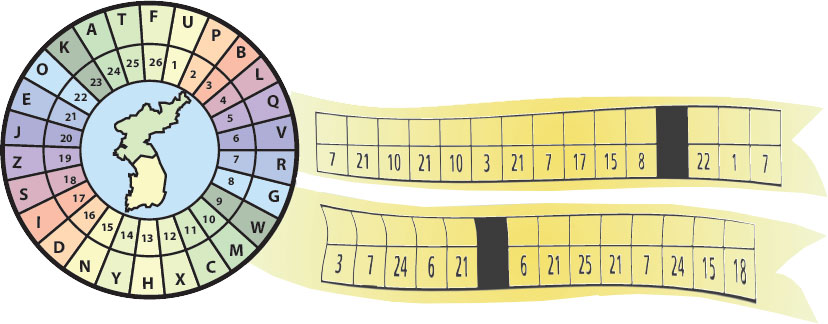Newspaper Activities
Did you know?
The new Visitor Education Centre at the Canadian National Vimy Memorial opened in April 2017. If you ever get a chance to go to France, make sure you check it out! There is a lot to see and do.
Break the code
During the Korean War, messages sometimes needed to be sent using codes so the enemy could not read them. Use the key below to “crack” the secret code.

1 = U, 2 = P, 3 = B, 4 = L, 5 = Q, 6 = V, 7 = R, 8 = G, 9 = W, 10 = M
11 = C, 12 = X, 13 = H, 14 = Y, 15 = N, 16 = D, 17 = I, 18 = S, 19 = Z
20 =J, 21 = E, 22 = O, 23 = K, 24 = A, 25 = T, 26 = F
| ___ | ___ | ___ | ___ | ___ | ___ | ___ | ___ | ___ | ___ | ___ | ___ | ___ | ___ | |
| 7 | 21 | 10 | 21 | 10 | 3 | 21 | 7 | 17 | 15 | 8 | 22 | 1 | 7 | |
| ___ | ___ | ___ | ___ | ___ | ___ | ___ | ___ | ___ | ___ | ___ | ___ | ___ | ||
| 3 | 7 | 24 | 6 | 21 | 6 | 21 | 25 | 21 | 7 | 24 | 15 | 18 |
What's in a word?
Below is a list of words found in this year’s newspaper. Write the word that fits each clue in the blanks given. Then, unscramble the letters in the squares to solve the question at the bottom.
GANDY PASSCHENDAELE PIGEON VIMY
Place in Belgium where Canadians fought in the fall of 1917.

Type of bird that flew with secret messages attached to its leg.

Remembrance Clubhouse member that mentioned the role of dogs in the military.

Famous First World War Canadian battle that took place in France April 1917.

Question: What is the name of the port city in France where Canadians fought in August 1942?

Did you know?
If you have not travelled overseas to visit First World War battlefields and memorials, try exploring them from here at home using a computer, tablet or smartphone! Google Canada recently unveiled spectacular views of the Canadian National Vimy Memorial and the Beaumont-Hamel Newfoundland Memorial. Using “street view,” you can navigate the monuments, preserved trenches and tunnels, as well as nearby cemeteries. You can even experience aerial views of the twin white pylons of the magnificent Vimy memorial and with Google Expeditions, turn it into a virtual reality tour of remembrance.
True or False?
How well did you understand the stories in this newspaper? If a statement given here is true, circle the letter under the “True” column. If a statement is false, circle the letter under the “False” column. Using only the letters you circled from the “True” column, answer the question below.
Question: What was the last name of Aileen, the little girl who gave a teddy bear to her father during the First World War?

| Statements | True | False |
| 1. Cats helped soldiers build roads and carry supplies in the jungles of Southeast Asia. | C | E |
| 2. Today, specially trained dogs help soldiers locate buried mines and other explosives. | R | B |
| 3. Bunny the horse and his battalion saw action in the first gas attack in England. | A | J |
| 4. Bunny the horse served in the Battle of Vimy Ridge in 1917. | O | N |
| 5. Aileen gave “Fluffy,” her favourite blanket, to her father Lawrence before he went off to serve in the First World War. | F | H |
| 6. Aileen’s father, Lawrence, fought during the muddy Battle of Passchendaele in Belgium. | G | I |
| 7. In 1942, soldiers used cell phones to communicate. | A | O |
| 8. In 1942, the Canadian Army sometimes relied on pigeons to carry important messages. | E | U |
| 9. People serving in uniform may get hurt physically, but their minds can also be affected by their experiences. | R | M |
| 10. Some Veterans feel that animals can play a role in helping them feel better. | S | K |
| 11. During the First World War, some Canadians fought on horseback as part of what was known as the rodeo. | N | V |
| 12. No horses were hurt during the First World War. | E | L |
- Date modified: